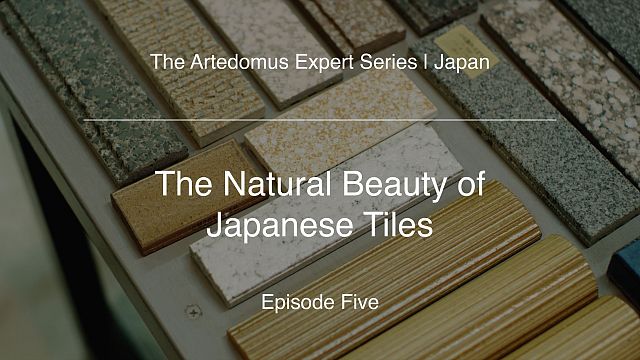The process by which natural clay is transformed into a beautiful and durable tile is the result of a manufacturing process that has its roots in centuries-old techniques.
In a testament to the value of these traditional manufacturing methods, many factories in Japan today continue to use technologies and equipment that are very old.
“One of the brilliant things about working with INAX Japanese ceramics for us is that the quality of the production is so high,” says Phil Brenton, Artedomus managing director. “We take thousands and thousands and thousands of square meters of mosaics from these factories and we have basically no issues with the production – which is an incredible thing considering that a lot of the technical aspects of these tiles [are] very difficult to get right.” The manufacturing processes that enable this level of precision and consistency, while also delivering the beautiful natural qualities for which Japanese ceramics are renowned, are the result of the factories’ experience working with the variables of temperature and timing that affect the chemical reactions that ultimately determine the result.
At the Omi Factory, the Artedomus team filmed a retired tunnel kiln. 100 metres long, with the hottest temperatures found in the centre of the kiln, the tiles move through on tracks over a period of two and a half days. Throughout this firing process, the raw materials are transformed into the exceptionally hard, durable final product, while minute variations in the time spent in different parts of the kiln and the associated temperature produce the beautiful complex characteristics of the glaze and finished tile.
At the Ceramic Lab, Phil shows the different results that can occur purely by increasing the amount of titanium dioxide, with the colour ranging from white through to a deep yellow. Altering the temperature produces different results again, as does reducing the amount of oxygen in the kiln – a process called reduction firing that emphasises the expertise that is involved in controlling and working with these very sensitive reactions. “Probably the most striking change is when you do the reduction firing,” Phil says. “This is still the same glaze but by stripping the oxygen out of the kiln during the firing process there’s very marked changes in the finished colours of the tiles. This is quite a volatile process and that’s when we get our more volatile, interesting glazed products and you see a lot more variation in the different tiles.”
Glazing and firing are not the only important aspects of tile production. The Artedomus team visited INAX’s Nippon Mosaic factory, the only factory in Japan to produce extruded ceramics. “Pressed tiles are traditionally the way that most floor tiles are made, but an extruded is pushed through a mould like a pasta!” explains Yassaman Bahar, senior sales at Artedomus Melbourne. “An extruded tile obviously affects the appearance, makes it a bit more handmade looking, a bit more unusual.”
Above all, understanding the manufacturing process, and how tradition and expertise are inseparable, is vital, Yassaman explains. “At Artedomus, it’s really important for us to be able to explain how the tile is made and why they are the quality that they are. You have to watch it being made, you have to talk to the factory owners, you need to understand the journey of the product.”






